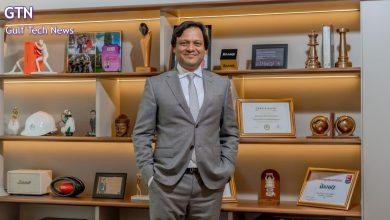Experience at the edge: Redefining CX for Saudi Arabia’s Vision 2030

In 2016, Saudi Arabia launched Vision 2030, a sweeping national agenda to future-proof its economy, reduce reliance on oil and enhance quality of life for citizens. Built around the pillars of a vibrant society, a thriving economy and an ambitious nation, the initiative has become synonymous with rapid innovation—driven by investments in AI, cloud computing, smart cities and digital government.
Today, these efforts are visible everywhere, from biometric border controls to AI-powered health platforms and cashless pilgrimages. Yet amid all this progress, a critical question has emerged: as infrastructure transforms and services go digital, is the customer experience transforming with them or being left behind?
While government platforms like Absher and Tawakkalna have raised the bar for ease and accessibility, not all sectors have kept pace. Despite the surge in connectivity and the availability of advanced technologies, many businesses—and even institutions—still rely on fragmented, one-size-fits-all communication systems that fall short of citizen expectations.
A connected nation, rising expectations
In 2025, Saudi Arabia stands as one of the most digitally advanced nations in the region:
- It has 36.84 million internet users, with 99% penetration
- 94.3% of the population is active on social media, with 35.1 million users (DataReportal 2024)
- 93.18% use smartphones to go online (Statista)
But this level of access is only the beginning. The real transformation lies in what people are now demanding—seamless, intelligent and hyper-personalised digital interactions across every touch point.
And this is where the gap starts to show.
Identifying the CX gap in Saudi Arabia
Saudi Arabia’s CX evolution is a critical component of Vision 2030’s people-first transformation. Industries such as fintech, tourism and entertainment are embracing personalised, digital-first engagement. The rise of STC Pay, digital-only banks and mega-projects like NEOM reflect growing demand for seamless, tech-enabled experiences. Yet despite this momentum, customer experience delivery is not yet keeping pace with digital ambition. Many organisations still struggle with fragmented platforms, legacy systems and siloed data—barriers that make it difficult to deliver the kind of real-time, personalised interactions today’s consumers expect.
According to PwC’s Voice of the Consumer 2024 survey, Saudi consumers are increasingly digital, health-conscious and sustainability-minded, demanding intuitive, tailored experiences at every interaction. However, 59% of regional organisations still rely on basic journey mapping and only a fraction are adopting integrated, insight-driven CX tools. Meanwhile, the Saudi customer experience management (CXM) market was valued at USD 181.2 million in 2024 and is projected to reach USD 746.8 million by 2030, growing at a CAGR of 19.4% (BlueWeave Consulting), underscoring both the market’s potential and the urgency for transformation.
What’s needed now is a shift from reactive CX models—common in sectors like finance, where customer issues are often addressed only after complaints—to proactive engagement. The current CX gap stems from organizations’ inability to break down data silos, integrate touchpoints and provide seamless service across channels. Despite having the infrastructure for advanced digital engagement, many businesses still lack the tools and processes to deliver personalised, anticipatory service that customers now expect. This gap not only hampers customer satisfaction but also limits the ability of businesses to fully leverage their investments in digital transformation.
As highlighted in IDC’s Future of Customer Experience 2024 predictions, businesses must unify data, channels and insights to meet rising expectations and fully capitalise on their digital infrastructure investments.
In short, the infrastructure is advancing, but experience delivery hasn’t fully caught up. To realise Vision 2030’s full potential, closing this CX gap must become a priority, not just in government, but across every industry shaping Saudi Arabia’s future.
Where expectations meet infrastructure
As organisations scale their digital operations, they face a layered challenge: How do you deliver personalised, real-time, multichannel engagement whilst ensuring data privacy, regulatory compliance and operational efficiency?
It’s no longer enough to have siloed digital tools or individual channel integrations. What’s needed is a cohesive infrastructure for communication, one that can keep pace with user behaviour and support the customer-first mind-set driving Vision 2030.
This is where engageX from e& enterprise steps in, to make execution possible at scale.
How engageX powers customer-centric transformation
- Omnichannel reach for a mobile-first nation
With 93% of Saudis accessing the internet via smartphones, meeting people where they are isn’t a convenience—it’s a baseline. engageX enables organisations to orchestrate communications across SMS, WhatsApp, voice, email, social platforms and mobile apps.
This is particularly vital in sectors like government, banking and retail where customer touch points have multiplied, and consistency matters more than ever. engageX unifies those channels under one umbrella, enabling smooth, intuitive interactions that feel effortless for users and manageable at scale for organisations.
- Intelligent contact centres, built for agility
As customer expectations evolve, contact centres must become more adaptive, responsive and channel-aware. engageX enables this shift by equipping organisations with cloud-native infrastructure, omnichannel agent interfaces and AI-powered self-service tools—all designed to streamline support operations.
From real-time routing to seamless transitions between virtual assistants and human agents, engageX helps reduce response times while improving customer satisfaction. For added flexibility, organisations can also tap into engageX’s BPO support for staffing and workflow management, making it easier to scale operations without compromising service quality.
- Data protection and responsible innovation
As digital touchpoints evolve, user trust is more important than ever. engageX is built with this in mind, offering:
- Encryption by default, ensuring secure conversations across all channels
- Granular access control, providing tight governance over sensitive information
- Enterprise-grade security, designed to protect data and maintain compliance
These features are essential for industries handling sensitive information, such as healthcare, finance, education and public services, where security breaches can have far-reaching consequences.
- Localised innovation for a localised vision
While engageX is built on global standards, its true strength lies in regional relevance. The platform understands and integrates:
- Arabic language preferences and UI
- Local telco integrations
These capabilities not only accelerate deployment but improve adoption and usability, ensuring that digital experiences actually resonate with Saudi users.
With over 6.5 billion interactions enabled annually and use cases spanning everything from social commerce to airline support across 900+ agents, engageX is already demonstrating how Saudi institutions can bring Vision 2030 to life, not just through services, but through better experiences.
Conclusion – From digital to human
Saudi Arabia’s journey to 2030 is one of extraordinary ambition and real, measurable progress. And if the goal is a society that’s not just digital, but truly human-centred, then the way people experience these services must evolve alongside the infrastructure itself.
By closing communication gaps and enabling smarter engagement, solutions like engageX are helping organisations transform Vision 2030 from a strategic vision into a lived reality, one meaningful interaction at a time.
Customer experience that is real, responsive and relevant is no longer a competitive advantage, it’s a national imperative. Whether in the public or private sector, organisations must now rethink not just how they serve, but how they connect, listen and adapt.




